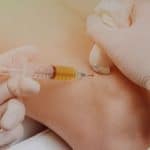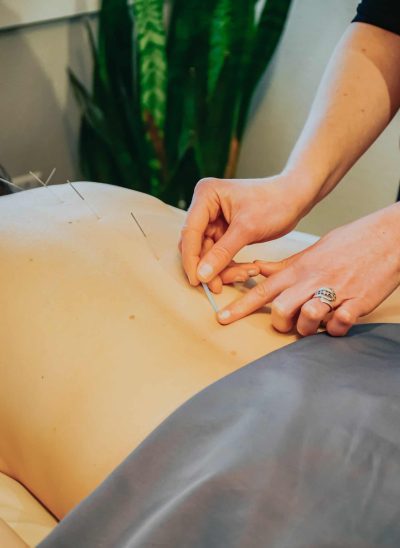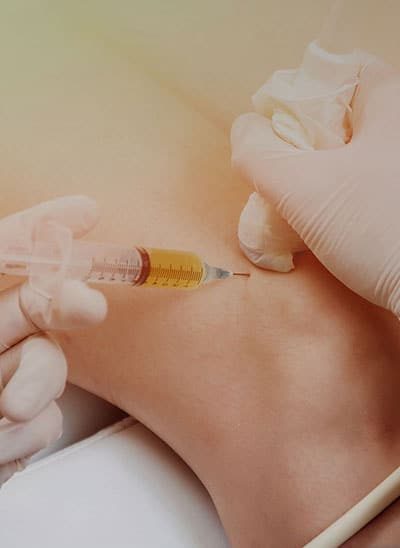Platelet-rich plasma (PRP) therapy stimulates your body’s internal healing response using platelets from your own blood. The experts at FoRM Health in Portland, Oregon, use PRP injections to treat a wide range of problems and concerns, with separate, dedicated specialists depending on whether you’re suffering from skin (aesthetic) or muscle and skeletal conditions (orthopedic). Call the office or use online booking to arrange your PRP injections consultation today.
Studies on PRP injections have exploded over the last decade as a result of its wide range of potential uses. Today, PRP often helps men and women find natural solutions to acute pain, chronic pain, or even aesthetic problems like hair loss.
What kind of conditions do PRP injections treat?
The doctors at FoRM Health in Portland, Oregon use PRP injections in many different situations, including:
- Arthritis
- Cartilage damage, including meniscus tears, labral tears, and chondromalacia
- Ligament damage (sprains), including to the ACL, PCL, LCL, MCL, deltoid, wrist ligaments, and more
- Tendon damage, including strains, tendonitis, tendinosis, and partial tendon tears. Includes rotator cuff injuries, achilles tendonitis, tennis elbow, plantar fasciitis, and more
- Tennis elbow
- Muscle damage
- Whiplash
- Back pain
- Headaches
- Shin splints
- Hair loss
- Aging skin
What separates getting PRP injections at FoRM Health from other clinics?
The FoRM Health team has over two decades of combined experience in treating many different pain-causing conditions with PRP injections. They offer a number of advantages for treatment success (sorry, this gets technical!):
- Technique: Your PRP is concentrated and prepared using an IRB-approved, double spin manual technique. What does this mean? Research shows a double spin centrifugation method superior for treatment success.
- Sterile prep: We use a laminar flow hood to ensure sterility and minimize risk of contamination before re-injecting.
- Accuracy: Ultrasound guidance is used for precise needle placement for most orthopedic injections.
- Comfort: For patients with needle phobias, pain sensitivity, or just general fears about injection procedures, FoRM offers Pro-NOX, a patient-administered form of nitrous oxide gas that results in anxiety relief and pain dissociation while remaining fully conscious.
The physicians at FoRM Health offer free consults for anyone considering orthopedic injection procedures. Call us today to set up a consultation, or schedule online for your initial visit and exam.
Schedule with FoRM’s PRP Specialist:
Dr. Ryan Minarik ND, LAc (Sports Medicine Specialist)
Dr. Brittany Krake ND, MDR (Sports Medicine Specialist)
Dr. Kai Herman ND (Aesthetic Specialist)
FAQ
PRP is a minimally processed extract of your own blood, providing a concentrated source of platelets. These platelets play a major role in the early stages of healing after an injury, so a large dose of them in a specific area can speed healing in a recent injury, re-start a healing response in an old injury, or balance an inflammatory response in chronic conditions such as arthritis. Ultimately, PRP can help promote healing and reduce inflammation.
For PRP injections, your doctor takes a blood sample from your arm. Then, they place the blood in a centrifuge that separates the platelets from the other blood layers*. The final PRP product is then concentrated under sterile conditions* to minimize risk of contamination. The PRP solution is then injected where needed.
*For those doing their research, we use a double spin technique, with sterile preparation under a laminar flow hood.
This depends largely on the structure injected and type of PRP solution used. A local anesthetic is used at the injection site to reduce needle/injection discomfort; this part is generally well tolerated. PRP is meant to stimulate an immune response, which starts with inflammation (and is the reason for pain during any injury). Since PRP re-stimulates this response, there can be ranging degrees of increased soreness and reduced mobility following treatment, on average for 2-5 days. This is usually a sign that the PRP is stimulating your immune response, which means it’s working.
For injections into a joint, such as for osteoarthritis, there is typically minimal discomfort, as the PRP solution used often helps modulate or reduce joint irritation.
Tylenol is generally allowed for pain relief. Low dose opioid medications may be prescribed for certain injections (typically only needed for 2-3 days following treatment). Anti-inflammatory and steroid medications are not allowed (rare exceptions) as these interfere with a normal inflammatory and healing response.
This depends on the type of injury, location, and length of time since onset. As a general rule, it takes 2-3 months for the initial stages of regeneration and repair to occur. At this point patients typically see and feel results. Repair processes can continue for many months after injections. For osteoarthritis, pain reduction can actually occur much more quickly, within a couple weeks. And when applied for newer (recent/acute) injuries, PRP may actually speed up healing time.
Again, this varies depending on the condition. Some treatments allow for return to baseline activities within 1 week, others require slow progression and therapeutic exercises over 2-3 months. Remember, we are typically trying to stimulate an injury to heal that is not already doing so on its own, which often requires a change or rest from the activity that may be preventing full recovery in the first place. But this does not mean sitting still! Physical therapy and/or targeted exercises/movements are very helpful during this process.
Yes! For certain conditions exercises are provided in our office. For others we have a list of quality PTs we refer to for concurrent treatment.
Aside from a small amount of local anesthetic, there are no other medications used or necessary. PRP is a completely natural procedure involving the patient’s own blood that is centrifuged, separated and then re-injected.
Typically 2-3 injections are needed, at 4-6 week intervals, but some conditions may only require 1 treatment. A follow-up is typically done at 3 weeks to assess progress, and determine timing and need for subsequent injections.
PRP is generally very safe and well tolerated with most medications or other medical conditions. Platelet or bleeding disorders, patients on immunosuppressive medications, active cancer, or infection around the site to be treated are all situations when PRP injections are generally not used. Anticoagulants (blood thinners such as warfarin/coumadin) interfere with platelet function and are relatively contraindicated. For certain patients, discontinuing these medications for a short time before and after treatment, with the prescribing physician’s knowledge and consent, may be an option to undergo treatment.
PRP is derived from your own body, posing little danger of allergy, hypersensitivity or foreign-body reactions. Risk of infection at the injection site is even further reduced given the presence of white blood cells (components of your immune system) in the PRP. A clean technique is used throughout the process to minimize exposure to microbes (infectious agents).
Platelets are normal components of the blood that are involved in the initial stages of inflammation and repair at an injury site. PRP involves drawing a patient’s blood and concentrating the platelets in a centrifuge. These platelets are then reinjected to injured tissue. The platelets release molecules (cytokines, growth factors) that signal an injury to the body and help start (or re-initiate) a healing response.
While our office is located in SE Portland, Oregon, many of our patients travel from the greater Portland area, including: Lake Oswego, Beaverton, Hillsboro, Tigard, Milwaukie, Happy Valley, and Oregon City, for in-office visits and procedures. We also offer virtual office visits, which allows us to provide service to anyone seeking care within Oregon, with the exception of procedures which must be performed in office.
















